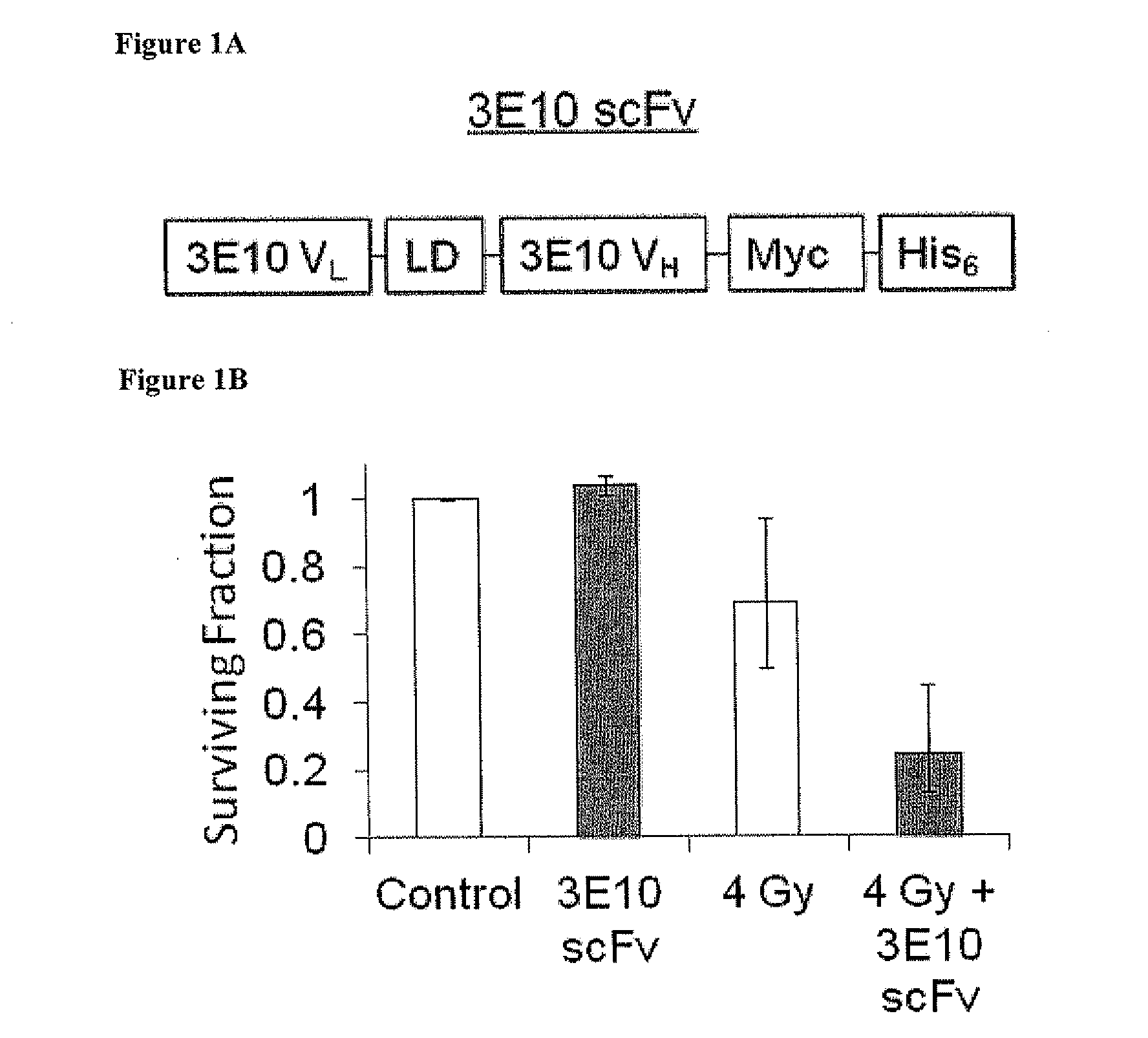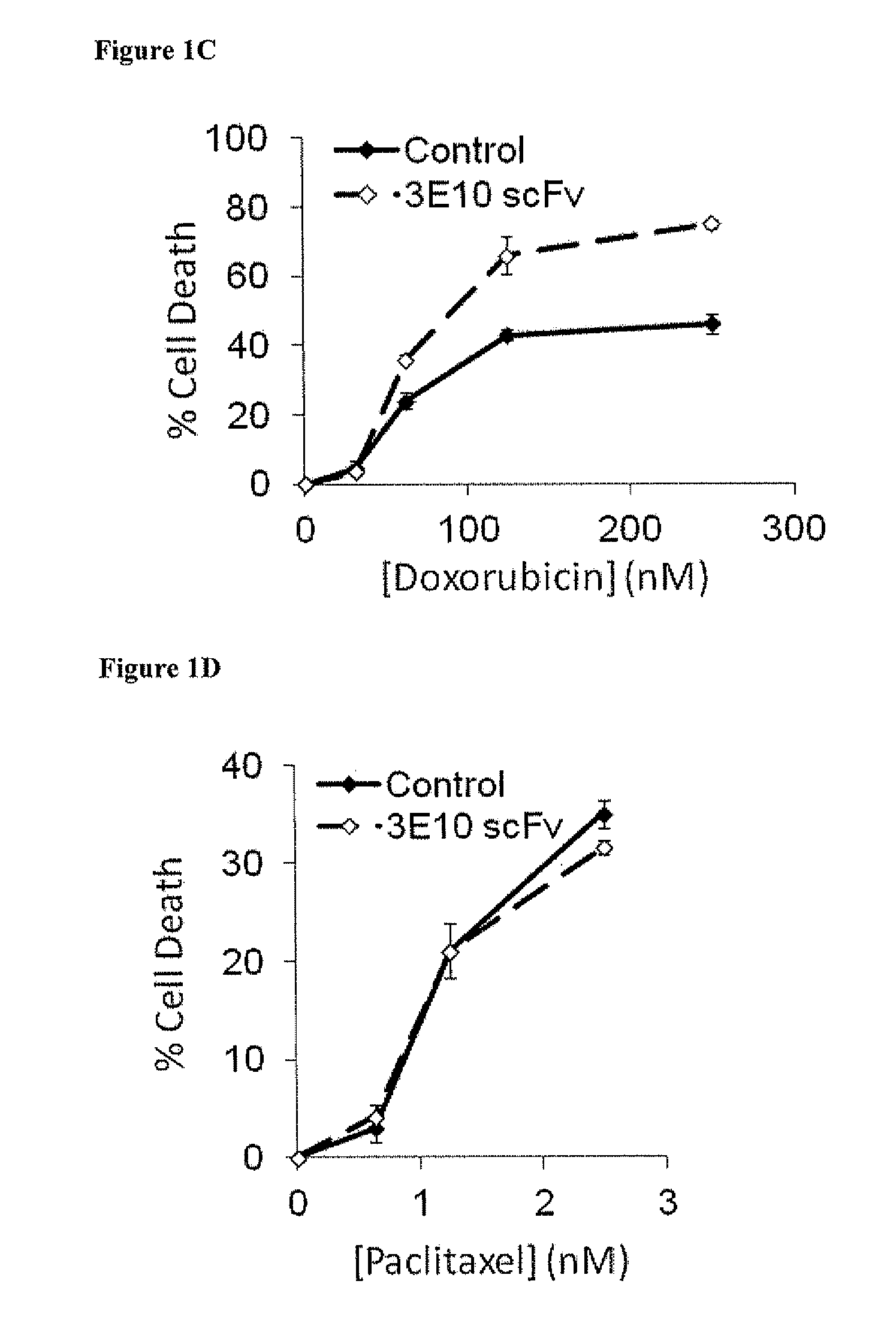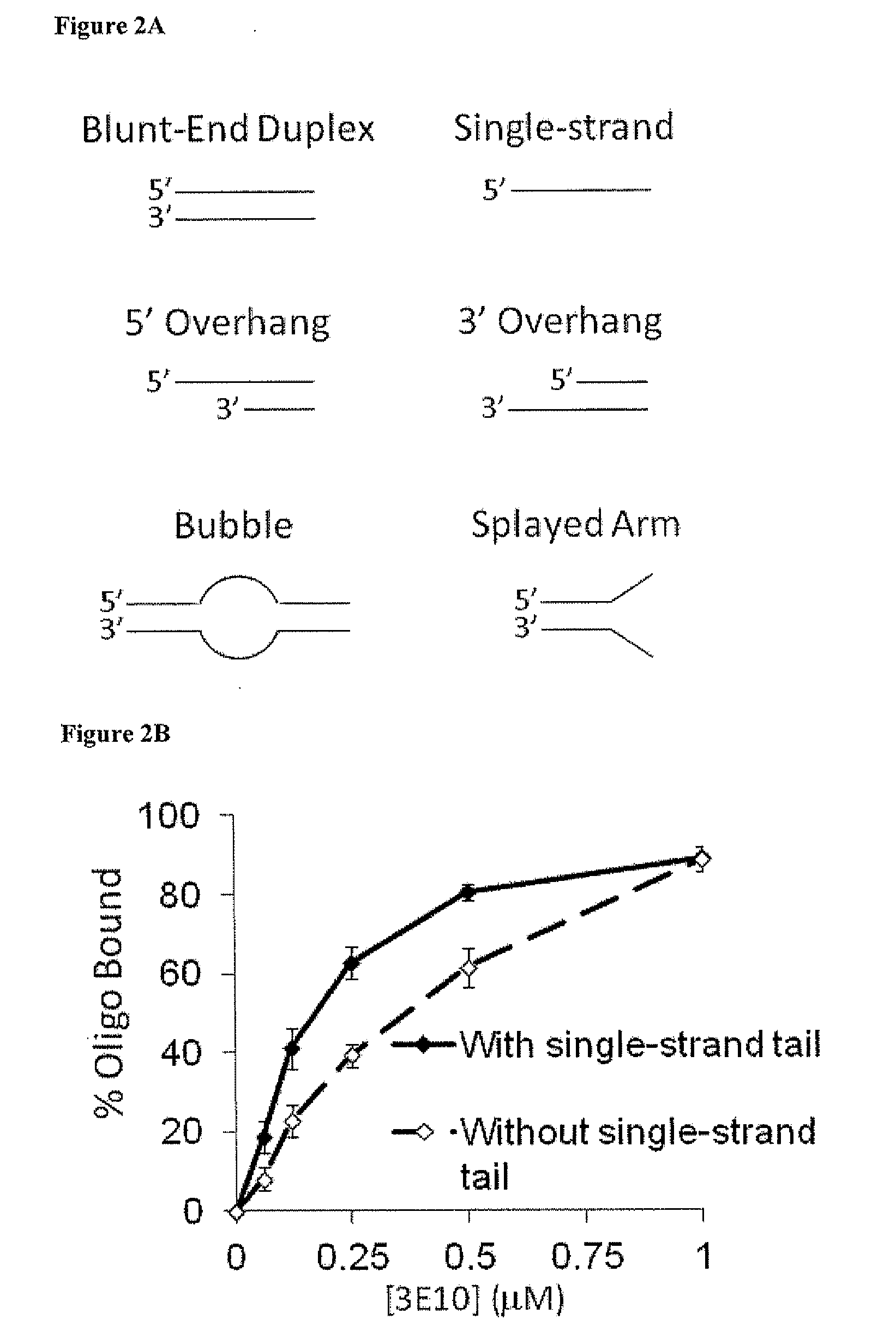Cell-Penetrating Anti-DNA Antibodies and Uses Thereof Inhibit DNA Repair
a technology of anti-dna antibodies and cell penetrating antibodies, which is applied in the field of anti-cancer antibody therapy, can solve problems such as cell death, and achieve the effect of increasing the sensitivity of cancer cells
- Summary
- Abstract
- Description
- Claims
- Application Information
AI Technical Summary
Benefits of technology
Problems solved by technology
Method used
Image
Examples
example 1
A Cell-Penetrating Anti-DNA Antibody (3E10) Enhances Cellular Radiosensitivity In Vitro
[0116]Materials and Methods
[0117]Cell Lines:
[0118]MCF-7, HeLa, U251, and U87 cell lines were obtained from the American Type Culture Collection (ATCC). PEO1 and PEO1 C4-2 cells were obtained (Sakai W, et al. Cancer Res 69:6381 (2009)). Cells were grown and maintained in Dulbecco's Modification of Eagles Medium (DMEM; Mediatech®) supplemented with 10% fetal bovine serum (FBS) at 37° C. in 5% CO2.
[0119]Production and Purification of 3E10 and 3E10 scFv:
[0120]3E10 was purified from hybridoma supernatant as described by Weisbart R H, et al. J Immunol 144; 2653 (1990). 3E10 scFv was expressed in Pichia pastoris and was purified from supernatant as described by Hansen J E, et al. Brain Res 1088:187 (2006). Protein concentrations were determined by Bradford assay.
[0121]In Vitro Cell Survival Assays:
[0122]Clonogenic assays and propidium iodide based assays were performed as described Hansen J E, et al. Can...
example 2
A Cell-Penetrating Anti-DNA Antibody (3E10) Potentiates DNA-Damaging Chemotherapy In Vitro
[0131]Materials and Methods
[0132]Since radiation targets DNA, the impact of 3E10 on cancer cell response to DNA-damaging chemotherapy was tested. Specifically, the influence of 3E10 on cell sensitivity to doxorubicin versus paclitaxel, two agents commonly used in cancer therapy, was compared. Doxorubicin is an anthracycline antibiotic that intercalates into DNA and induces strand breaks (Tewey K M, et al. Science 226:466 (1984)), while paclitaxel interferes with microtubule function (Jordan M A, et al. Proc Natl Acad Sci USA 90:9552 (1993)) but does not directly damage DNA.
[0133]It was predicted that 3E10 scFv would sensitize cells to doxorubicin but not to paclitaxel. U87 human glioma cells were treated with increasing doses of doxorubicin (0-250 nM) or paclitaxel (0-25 nM) in the presence of control buffer or 10 μM 3E10 scFv, and percent cell killing was then determined by propidium iodide fl...
example 3
A Cell-Penetrating Anti-DNA Antibody (3E10) Inhibits DNA Repair
[0136]Upon establishing that 3E10 scFv sensitizes cells to DNA-damaging agents, the mechanism underlying this effect was investigated. Both IR and doxorubicin induce DNA strand breaks, and so it was hypothesized that 3E10 scFv might have an effect on DNA repair, particularly strand break repair. As a first step, the DNA binding properties of 3E10 were examined. The binding affinity of 3E10 for several different DNA substrates, including single-stranded DNA, blunt-end duplex DNA, duplex DNA with an internal bubble due to heterology, duplex DNA with splayed single-stranded ends, duplex DNA with a 5′ single-stranded tail, and duplex DNA with a 3′ tail, (FIG. 2A) was determined by incubating radiolabeled DNA substrates prepared as described by Xu X, et al. EMBO J 28:568 (2009) with increasing concentrations of 3E10 (0-1 μM) followed by electrophoretic mobility shift analyses.
[0137]Materials and Methods
[0138]DNA Binding Studi...
PUM
| Property | Measurement | Unit |
|---|---|---|
| Electrical resistance | aaaaa | aaaaa |
| Therapeutic | aaaaa | aaaaa |
| Sensitivity | aaaaa | aaaaa |
Abstract
Description
Claims
Application Information
 Login to View More
Login to View More - R&D
- Intellectual Property
- Life Sciences
- Materials
- Tech Scout
- Unparalleled Data Quality
- Higher Quality Content
- 60% Fewer Hallucinations
Browse by: Latest US Patents, China's latest patents, Technical Efficacy Thesaurus, Application Domain, Technology Topic, Popular Technical Reports.
© 2025 PatSnap. All rights reserved.Legal|Privacy policy|Modern Slavery Act Transparency Statement|Sitemap|About US| Contact US: help@patsnap.com



